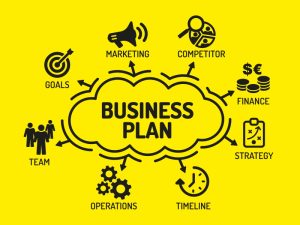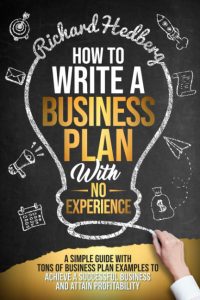A well-crafted business plan is the backbone of any successful business. Whether you’re launching a new startup, looking to secure funding, or simply mapping out your growth strategy, creating an effective business plan is essential. This comprehensive guide will walk you through every step, breaking the process down into manageable tasks with clear examples, tips, and practical insights. By the end, you’ll have the tools to create a business plan that sets your venture up for success.
What is a Business Plan?
A business plan is a written document that outlines your company’s goals, strategies, and financial projections. It serves as a roadmap, helping entrepreneurs and business owners to stay on track, make informed decisions, and attract investors. Creating an effective business plan ensures you present a clear vision of your business to stakeholders, partners, and lenders.
Why Do You Need a Business Plan?
Before diving into the details of creating a business plan, it’s important to understand its significance. Here are some key reasons why a business plan is crucial:
- Direction and Focus: A business plan provides clarity on your objectives and how to achieve them.
- Securing Funding: Investors and banks require a solid business plan before approving loans or investments.
- Risk Management: Identifies potential challenges and solutions before they arise.
- Growth Strategy: Helps you map out short-term and long-term growth plans.
- Attracting Partners: A detailed plan can help attract partners, employees, or stakeholders who align with your vision.
Step-by-Step Business Plan Guide
Let’s break down the process of creating a winning business plan into easy, actionable steps.
Step 1: Executive Summary
The executive summary is a snapshot of your entire business plan. It provides an overview of your company, goals, and strategies. Investors and lenders often read this section first, so make it compelling and concise.
What to Include:
- Business name, location, and mission statement
- Brief description of products/services
- Target market and key competitors
- Financial highlights (revenue forecasts, funding needs, etc.)
Example: “XYZ Fitness is a modern gym and wellness center located in New York City. Our mission is to provide affordable and personalized fitness solutions for busy professionals. We aim to serve 1,000 clients in the first year and achieve a projected revenue of $500,000.”
Step 2: Business Description
This section describes your business in detail. Explain what your business does, the problems it solves, and what sets it apart.
What to Include:
- Business structure (e.g., sole proprietorship, partnership, corporation)
- The problem your business solves
- Your unique value proposition
Example: “XYZ Fitness focuses on tailored fitness plans for individuals with busy schedules. Unlike traditional gyms, we offer flexible hours, virtual training options, and personalized coaching.”
Step 3: Market Analysis
Understanding your market is key to creating an effective business plan. This section shows that you know your industry, competitors, and target audience.
What to Include:
- Industry trends and market size
- Customer demographics (age, location, income, etc.)
- Competitor analysis (strengths, weaknesses, opportunities)
- Gaps in the market your business will address
Example: “The fitness industry in NYC is valued at $10 billion annually, with a growing demand for flexible and personalized fitness solutions. Our competitors include large gyms like Gold’s Gym, but few offer tailored coaching services.”
Step 4: Organization and Management
Outline your company’s structure and introduce key team members. Investors want to know who is behind the business.
What to Include:
- Business structure (hierarchy, roles, and responsibilities)
- Leadership team (qualifications and experience)
- Advisory board or consultants (if applicable)
Example: “John Smith, CEO of XYZ Fitness, has over 10 years of experience in personal training and business management. Our team includes certified trainers, nutritionists, and marketing professionals.”
Step 5: Products and Services
Describe the products or services your business offers. Focus on the value and benefits they provide.
What to Include:
- Detailed descriptions of products or services
- Pricing model
- Benefits and value proposition
- Future plans for product development
Example: “XYZ Fitness offers in-person training, virtual workout sessions, and meal planning services. Pricing starts at $50 per session, making fitness affordable for professionals.”
Step 6: 
Your marketing and sales plan explains how you will attract customers and generate revenue.
What to Include:
- Marketing channels (social media, SEO, email marketing)
- Advertising strategies (Google Ads, influencer partnerships)
- Sales funnel and customer retention plans
- Budget for marketing efforts
Example: “We will focus on Instagram advertising, partnerships with local influencers, and offering free trial sessions to attract new clients. Our target is to acquire 200 clients in the first quarter.”
Step 7: Funding Request
If you are seeking funding, clearly outline your financial needs and how the money will be used.
What to Include:
- Amount of funding needed
- Purpose of the funding (equipment, marketing, hiring, etc.)
- Future financial goals
Example: “XYZ Fitness is seeking $100,000 in funding to purchase gym equipment, lease a facility, and launch an initial marketing campaign. This investment will help us achieve profitability within 12 months.”
Step 8: Financial Projections
Financial projections demonstrate your business’s potential for success. Include realistic revenue and expense forecasts.
What to Include:
- Income statement (revenue, expenses, profit)
- Cash flow statement
- Break-even analysis
- Sales forecasts for the next 1-5 years
Example: “Projected revenue for Year 1 is $500,000, with a net profit margin of 20%. Our monthly break-even point is 80 clients.”
Practical Example of a Business Plan
Here is a simplified example to illustrate how everything comes together:
Executive Summary
“XYZ Fitness provides personalized fitness solutions in NYC. We aim to acquire 1,000 clients in Year 1 and generate $500,000 in revenue.”
Business Description
“We solve the problem of inflexible gym schedules by offering virtual training and personalized coaching.”
Market Analysis
“The fitness industry in NYC is booming, but few players offer affordable, customized training.”
Organization
“CEO John Smith leads our team of certified trainers and nutritionists.”
Products and Services
“In-person and virtual fitness coaching starting at $50/session.”
Marketing Plan
“Our strategy includes Instagram ads, influencer partnerships, and free trial sessions.”
Funding Request
“Seeking $100,000 to launch operations and marketing efforts.”
Financial Projections
“Year 1 revenue: $500,000. Net profit: 20%.”
Frequently Asked Questions (FAQs)
Q: How long should a business plan be?
A: A business plan can range from 10 to 30 pages, depending on your audience and the complexity of your business.
Q: How often should I update my business plan?
A: Review and update your business plan annually or when significant changes occur.
Q: Can I create a business plan without financial projections?
A: While possible, financial projections are essential if you’re seeking funding or presenting to investors.
Q: What tools can help me write a business plan?
A: Tools like LivePlan, Bizplan, and templates from SBA.gov can simplify the process.
Conclusion
Creating an effective business plan may seem overwhelming at first, but by breaking it into these clear steps, you can build a roadmap that sets your business up for success. Whether you’re just starting out or refining your existing plan, this step-by-step guide will help you stay focused and organized.
Ready to bring your business plan to life? Explore related tools and tips to streamline the process

